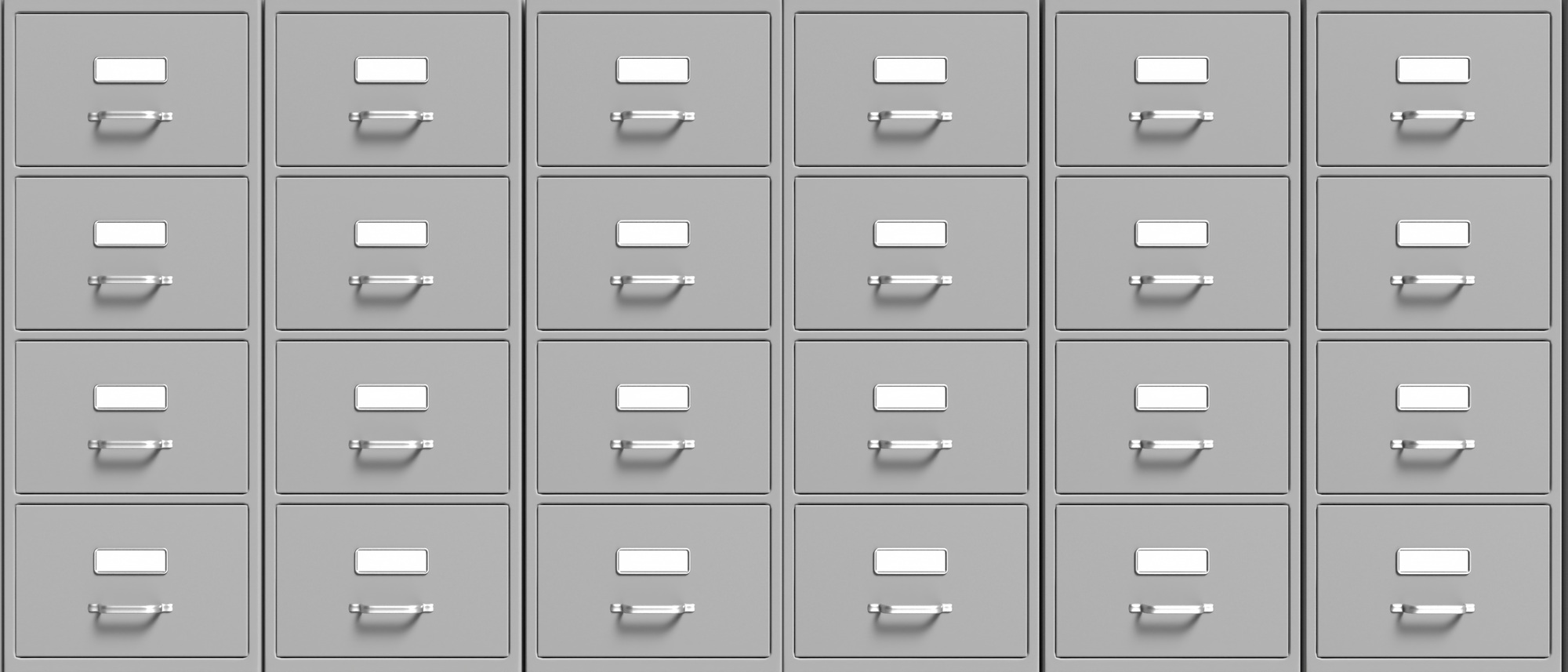Key Takeaways

- Enhanced Productivity: A well-organized filing system allows quick access to essential documents, minimizing time spent searching and maximizing workflow efficiency.
- Stress Reduction: Maintaining organized files fosters a sense of control and reduces anxiety, leading to improved morale and creativity within your team.
- Effective Structures: Implement clear folder hierarchies, labeling techniques, and color-coding systems for both physical and digital files to streamline document management.
- Utilize Proper Tools: Invest in filing cabinets, labeling systems, and cloud storage solutions to effectively organize and secure your important documents.
- Regular Backups: Establish a routine for backing up digital files to prevent data loss and ensure easy access to vital business information.
- Standardized Naming Conventions: Use consistent and descriptive file naming practices to simplify searches and enhance clarity when locating documents.
Are you drowning in a sea of disorganized files? You’re not alone. Many people struggle with keeping their documents in order, whether they’re physical papers or digital files. A cluttered filing system can lead to wasted time and increased stress, but it doesn’t have to be that way.
Benefits Of File Organization

File organization plays a crucial role in enhancing efficiency in a small business. A structured filing system not only streamlines operations but also fosters a healthier work environment.
Increased Productivity
Increased productivity stems from quick access to necessary documents. An organized filing system allows you to find files in seconds instead of wasting valuable time searching through clutter. By establishing clear categories and labels, you’ll eliminate confusion, enabling your team to focus on essential tasks. For instance, if your marketing team needs to access a report, a well-organized digital folder helps them locate it faster, thus improving overall workflow.
Reduced Stress
Reduced stress accompanies a tidy filing system. Disorganization leads to frustration and anxiety, taking a toll on your team’s morale. Knowing where every file is can create a sense of control in your workspace. When running a small business, minimizing stress directly impacts creativity and productivity. Employees are more likely to contribute effectively when they don’t feel overwhelmed by chaos. A clean and orderly environment promotes clarity and enhances focus, allowing creative solutions to emerge without distraction.
Types Of File Organization

Organizing files efficiently is essential for small businesses looking to enhance productivity. A well-structured filing system minimizes clutter and maximizes accessibility.
Physical File Organization
Physical file organization employs various tools to manage paper documents effectively.
- File Cabinets: These traditional storage solutions come in various sizes, offering security for sensitive documents. Lockable options add an extra layer of protection for your valuable files.
- Folders and Binders: Use folders and binders to group related documents. Color-coded systems and labeled tabs simplify identification, making it easier to find what you need, which is crucial when running a small business.
- Labeling Systems: Labels serve as vital tools for quick content identification. Utilize adhesive labels, label makers, or printable labels to ensure each file is easily recognizable.
- Shelving Units: Shelving units are ideal for accommodating larger volumes of files or boxes. They save space while providing easy access, promoting an organized work environment.
Digital File Organization
Digital file organization streamlines document management for small businesses in the digital age.
- Cloud Storage Solutions: Utilize cloud services like Google Drive or Dropbox for secure, easily accessible file storage. These platforms facilitate collaboration and allow team members to share documents without hassle.
- Folder Structures: Create a logical folder structure that mirrors your physical files. Use clear and descriptive naming conventions for folders and files, ensuring that everyone on your team understands where to find specific documents.
- File Naming Conventions: Implement standardized file naming conventions. Include relevant keywords and dates in your file names. This practice makes it easier to search and retrieve files swiftly.
- Regular Backups: Establish routine backups for digital files. Regularly back up your data to prevent loss due to system failures or cyber threats, maintaining the integrity of your files.
Streamlining both physical and digital file organization can significantly impact your small business’s efficiency and productivity.
Effective File Organization Ideas

Effective file organization enhances efficiency in running a small business. Simplifying access to documents reduces stress and increases productivity. Here are some strategies to improve your file organization system.
Color Coding System
A color-coded system boosts file organization by assigning colors to various file types based on importance or status. For instance, use red for high-priority files, green for completed projects, orange for projects in progress, and blue for those not yet started. This method applies to both physical and digital files. For digital files, utilize tools like Folder Marker to change folder icon colors, making identification quick and easy.
Folder Structure Hierarchy
Designing a hierarchical folder structure is critical for effective file management. Create main folders for broad categories related to your small business, such as “Clients,” “Invoices,” and “Projects.” Within each main folder, establish subfolders for finer organization. For example, under “Clients,” include subfolders for each client, consolidating all relevant documents in one location. This structure allows for straightforward navigation and quick access when you need information.
Labeling Techniques
Implementing clear labeling techniques significantly improves file retrieval. Use specific, descriptive labels for folders and file names. For example, instead of “Document1,” name it “2023_Client_Proposal_ABC_Corp.” This clarity reduces confusion and speeds up your search process. When dealing with physical files, consider using labels with clear fonts and colors for easy identification. Organizing your files with effective labels supports a smoother workflow in your small business.
Tools And Resources For File Organization

Effective file organization requires the right tools and resources. These systems simplify document management, which is crucial when running a small business.
Physical Organizers
Physical organizers play a vital role in maintaining order in your office.
- File Cabinets: File cabinets provide a secure and traditional solution for storing documents. They come in various sizes and designs, allowing you to choose what fits your space and needs. Their locking mechanism adds a layer of security for sensitive information.
- Folders and Binders: Utilizing folders and binders helps you group related files. Choose folders with tabs or color-coding to enhance visibility and retrieval. This approach makes it easy for you and your team to locate files quickly, reducing downtime.
- Labeling Systems: A labeling system is essential for quick identification of files. Use adhesive labels, label makers, or printable labels to create clear tags for folders and binders. This strategy streamlines the search process, enabling better efficiency in your operations.
- Shelving Units: Shelving units serve as an excellent space-saving solution for larger volumes of files or boxes. Their adjustable nature allows customization, ensuring accessibility to your important documents without cluttering your workspace.
Digital Tools
Digital tools are essential for managing electronic documents in today’s small business environment.
- Cloud Storage Solutions: Using cloud storage helps secure and back up your important files. Services like Google Drive or Dropbox enable easy access from anywhere, allowing seamless collaboration among team members.
- Logical Folder Structures: Establish a logical folder structure for your digital files. Create main folders for broader categories and subfolders for specific topics, ensuring organization aligns with your business needs.
- Standardized File Naming Conventions: Implement standardized file naming conventions to foster consistency and clarity. This approach helps you and your team recognize files quickly and reduces confusion associated with different naming methods.
- Regular Backups: Schedule regular backups to safeguard your digital assets. This practice prevents data loss, ensuring that crucial business documents remain accessible in case of unexpected incidents.
By effectively utilizing physical and digital tools, you enhance your small business’s file organization. These resources contribute to improved efficiency and productivity in managing both physical documents and digital files.
Conclusion

Taking the time to organize your files can transform your workspace and boost your productivity. By adopting effective methods for both physical and digital files you create a more efficient environment that fosters creativity and reduces stress.
Implementing strategies like color-coding and clear labeling makes it easier to find what you need when you need it. Incorporating tools like file cabinets and cloud storage ensures you maintain order in your filing system.
With a tidy and well-structured approach to file organization you’re not just saving time but also empowering yourself and your team to work more effectively. Embrace these ideas and watch your productivity soar.
Frequently Asked Questions

Why is file organization important for small businesses?
Effective file organization is crucial for small businesses as it enhances productivity by allowing quick access to necessary documents. A well-structured filing system reduces stress and creates a sense of control, boosting team morale and encouraging creativity.
What are some physical file organization methods?
Physical file organization methods include using file cabinets, folders, binders, labeling systems, and shelving units. These tools help manage paper documents and keep the workspace tidy.
How can I organize my digital files effectively?
To organize digital files effectively, utilize cloud storage solutions, create logical folder structures, use standardized file naming conventions, and perform regular backups. This approach streamlines document management and improves accessibility.
What is a color-coding system, and how can it help?
A color-coding system categorizes files by importance or status, making them easier to identify. It is beneficial for both physical and digital files, helping users quickly locate what they need.
What tools can improve file organization in an office?
Physical organizers like file cabinets, folders, and binders, as well as digital tools like cloud storage solutions and standardized file naming conventions, can greatly enhance file organization, leading to improved efficiency and productivity.
Image Via Envato: Prostock-studio, ckstockphoto, Pressmaster, westend61, rawf8, davidgyung, donut3771



